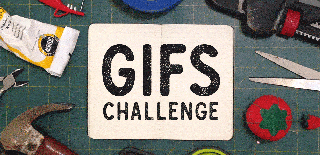Introduction: Skip Counting Wheel
A skip counting wheel is a learning tool that combines math, art, and fine motor skills. Children wrap yarn around wooden pegs as they skip count to discover numerical and geometric patterns. It is a more pleasant way to learn multiplication than rote memorization. In addition, this manipulative is accessible to a variety of learning styles - visual, kinesthetic, and aural.
Best of all, students can play a large roll in the creation of these tools. I have always found this leads to better engagement with the finished project afterwards.
Attachments
Step 1: Collect Supplies and Tools
You will need to collect the following supplies. You will likely have many on hand already if you craft often.
-a wood craft circle or tree slice between 6-10” wide and around 1” thick (TIP: larger will be better for younger or less dextrous children)
-assortment of medium and fine grit sandpaper
-pattern template and worksheets (included in .pdf file)
-electric drill or rotary drill
-7/32" drill bit
-masking or painter's tape
-10 axel pegs (1.25" long, 7/32" width)
-fine tipped permanent art pen
-aerosol matte finish spray sealant
-spare cardboard box
-small paintbrush
-(optional) laminator
-(optional) laminating sheets
-yarn, craft cord, or embroidery floss (thicker string is less likely to tangle)
-(optional) ruler and colored pencils, paint, or crayons for student use
Step 2: Sand Your Wood
As needed, sand your wood. Start with a medium grit sandpaper (such as 100 grit) and work your way to a finer grit (such as 150 or 220). Wipe your wheel down when you are finished to clear away any sawdust. This is the perfect time to involve your student(s) in the project. Children love using things they help create.
Step 3: Print the Pattern Template
Print off the pattern template. It is sized so that the circle will be 7 inches wide. You will want to match this to the size of your wood piece. It should cover most of your circle but leave enough of an edge that you will have space to write your numbers and drill holes without worrying about cracking your wood (approximately ¾ inch on each side). TIP: Note what percent you size the pattern by as you may want to use this same adjustment later if you print the differentiation cards.
Alternative: if you are working with mixed age groups you could challenge older children studying geometry to create the template by giving them a blank circle and asking them to determine where the pegs go.
Step 4: Center Your Pattern
Center the pattern in your wood circle. If it is sliding around, consider taping it down (between the black lines) with painters or masking tape.
Step 5: Mark Places to Drill
Make dots on your wood using a pencil at the end of each black line to show where you will drill your holes.
Step 6: Drill Your Holes
Slowly drill a hole at your first dot. Check it for sizing against your pegs, both for the fit of the diameter and to get a depth that you like. Make sure that you don’t have trapped sawdust affecting the depth of your hole. An easy way to clear this is to turn your wood over and give a gentle but firm whack to dislodge any dust. (TIP: Make sure you are keep your drill bit straight, don’t drill into your wood at an angle.)
This is another place that children can help if you have a rotary hand drill and supervise.
Step 7: Establishing Drilling Depth
Put the drill bit back into your finished hole. Take a piece of painters tape and wrap it carefully around the bit, just above the wood, so you will know what depth to drill to on your other holes. (TIP: Drill bits have sharp edges, don’t cut yourself on them.)
Step 8: Drill Holes
Drill the rest of your holes using the dots and the painters tape as guides for where to put your holes and how deep to drill them.
Step 9: Add Number Labels
Use a permanent art pen to carefully write the numbers 0-9 next to each hole. Alternatively use a wood burner, a stencil, acrylic paint, and/or vegetable dyes to put the numbers on.
Step 10: Apply Mod Podge
Apply two thin coats of Mod Podge on the topside of your wood disk. Allow it to dry thoroughly after each coat. Do NOT skip this step as the sealant will likely cause your numbers to bleed without a good layer of Mod Podge protecting the ink. TIP: Don’t get the Mod Podge in your holes. Wipe them out with a bit of paper towel if this happens.
Our skip counting circle is going to be used in a forest school setting. It will get dirty and wet. If you will be using your skip counter in a more forgiving setting, you can consider using a more eco-friendly beeswax polish instead of the Mod Podge and sealant.
Step 11: Coat Pegs With Sealant
Punch holes in your scrap box to hold your axel pegs upright. Coat them with two thin coats of sealant (allowing the sealant to dry thoroughly between coats). Be sensible and do this in a well ventilated area over something you won't mind get extra sealant on.
Step 12: Apply Sealant
Apply a thin coat of matte acrylic spray sealant on the top of your disk and allow it to dry thoroughly. Consider if a second coat is needed. Then flip your project over. Spray the bottom and sides with two thin coats of sealant. Again, be sensible and do this in a well ventilated area over something you won't mind get extra sealant on.
Step 13: Insert Pegs
Use a small paint brush to apply wood glue inside the holes. (Alternatively you could dip the pegs in the wood glue but it tends to be messier.) Wipe away any excess glue and allow the glue to dry. If the fit is tight, tapping the pegs gently with a rubber mallet may help. Allow the glue to dry before using.
Step 14: Add an Anchor Loop
Add a loop to one end of your yarn/thread/craft string that easily slips over the top of the pegs. This will anchor the string when you begin by being slipped over the zero peg.
Step 15: Print Differentiation Cards (optional)
If you are going to use the differentiation cards to help younger students then: print them out, laminate them, and cut them out along the outside edge.
Step 16: Introduce the Skip Counting Wheel
Give the cards, a small ball of yarn, and the skip counter to a child and show them how to use it. Start with skip counting by ones or twos. As you count out loud, wrap the yarn all the way around each corresponding peg to anchor it in place. Explain that the wheel only shows the ones digit so that as you continue the zero will now stand for the 10, the 1 the 11, the 2 for 12 etc. Continue skip counting until 20 at which point you will have made two complete circuits of the wheel. Discuss the pattern that they yarn made. What shape is outlined?
Step 17: Child Led Exploration
Allow the child to explore with the wheel as they try different numbers. Try stacking multiple sets of skip counting on top of each other. At some point it will become appropriate to talk about the patterns each number makes and why the same geometric repeats. (Hint: numbers that add up to ten - such as 3 and 7 - will make the same pattern.)
Step 18: Art Extension
After some exploration, have older students recreate and color a pattern created by the skip counting. While paint, crayons, or colored pencils would all work for this, watercolor pencils are particularly nice to use as it will make creating color gradations easier and will help reinforce color theory.

First Prize in the
Teachers Contest 2017

Runner Up in the
GIFs Challenge 2017

Participated in the
Outside Contest 2017








